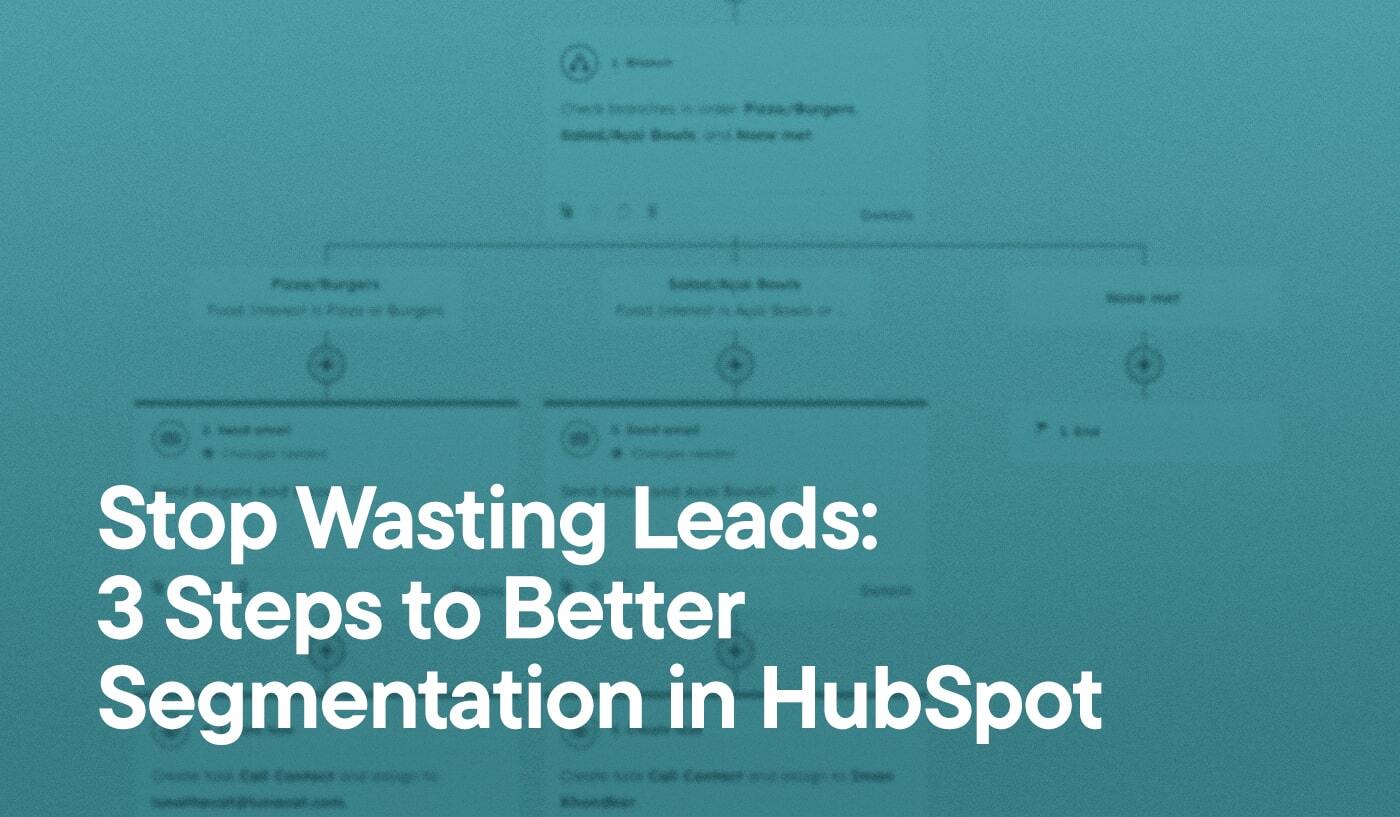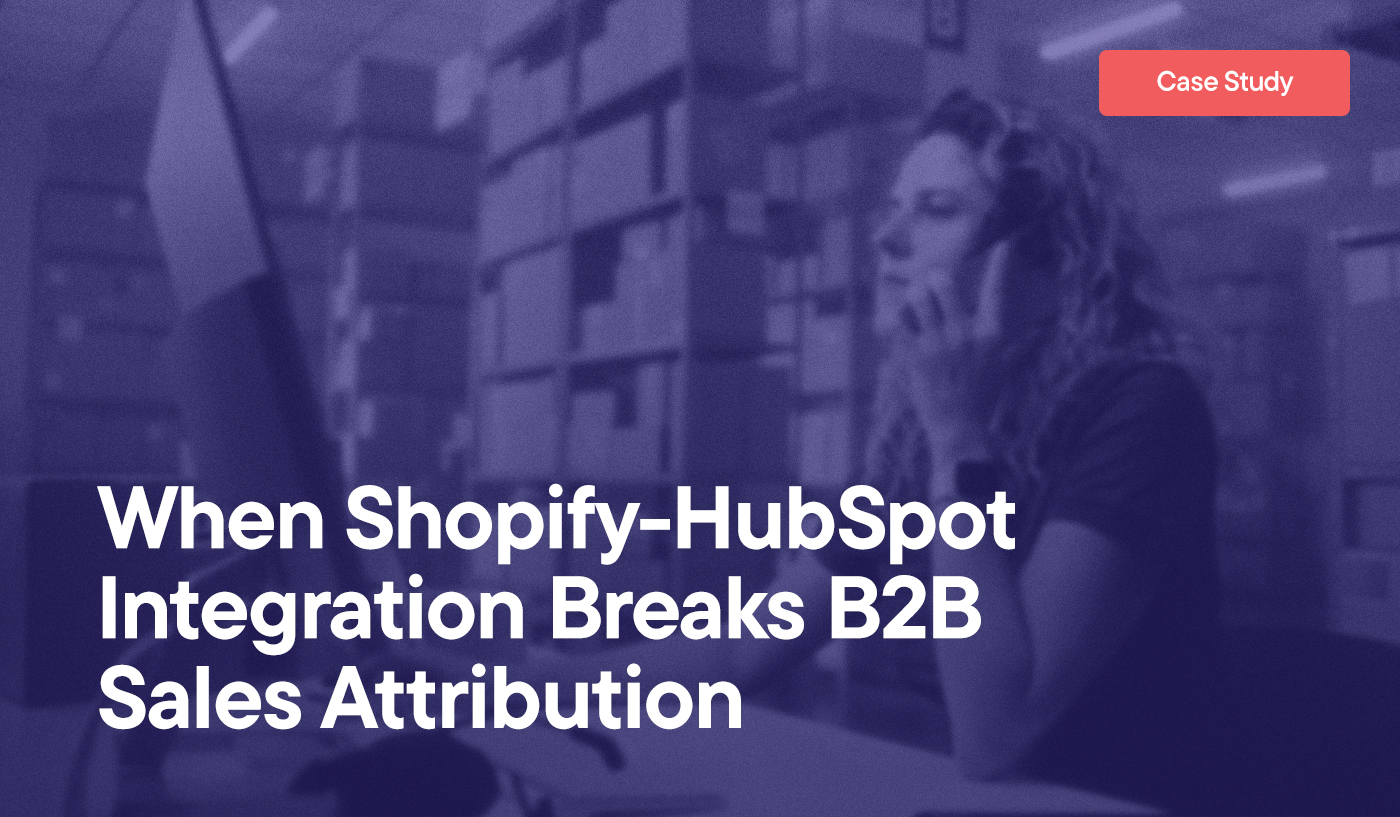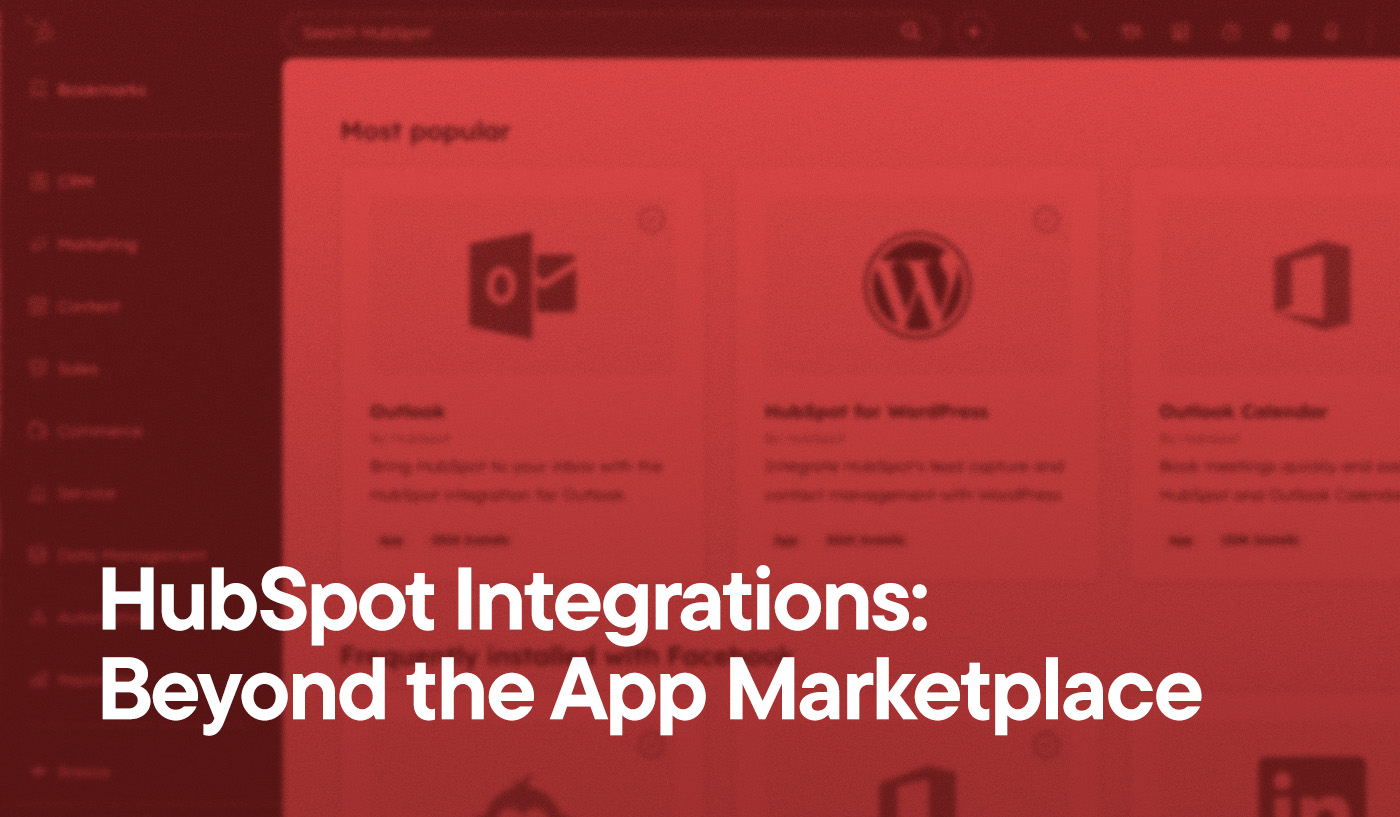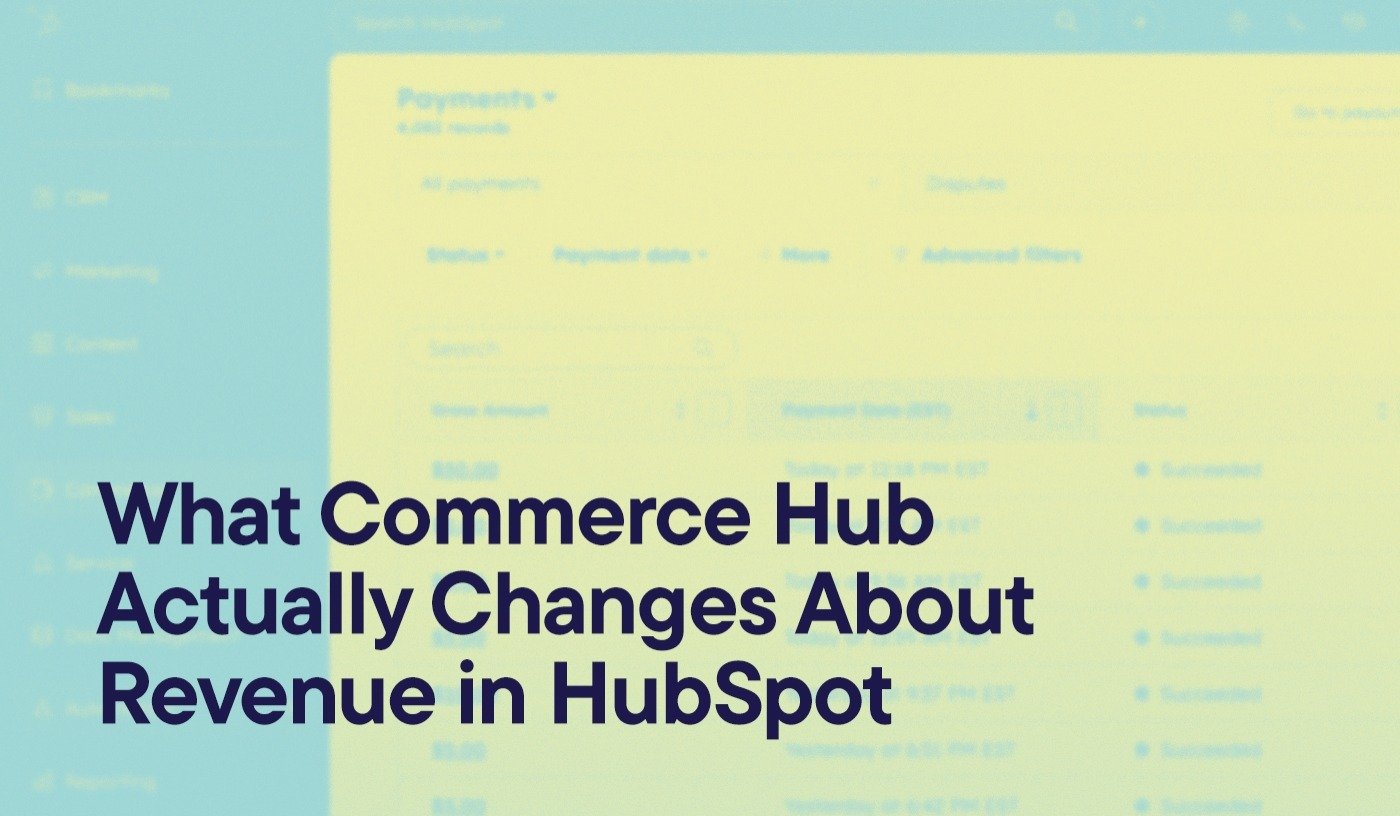Throughout my time working at HubSpot (and after), I’ve looked at thousands—maybe tens of thousands—of portals and have seen my share of missed opportunities. One of the most consistent? A lack of intentional segmentation. When teams finally recognize its importance, it’s often after the fact—when it’s harder to implement changes that could have made a difference earlier in the buyer journey.
Even when segmentation isn’t entirely missing, it’s often reactive. Teams suddenly realize they need clarity on where a lead came from, what stage they’re in, or what they’re interested in—leading to a rushed, retrofit solution. And while labeling people in real life can feel reductive, in a marketing-to-sales handoff, clear segmentation can be the difference between a lost lead and a paying customer.
Segmentation Isn’t Just Lists—It’s the Backbone of Personalization
With all this in mind, it’s important to get to the bottom of what segmentation is. While not a word we hear often—especially outside of tech—segmentation simply means dividing your contacts into smaller groups based on shared characteristics, often into lists (but it is so much more than that).
In HubSpot, segmentation is one of the most powerful tools you can use to personalize engagement, accelerate sales, and prevent leads from slipping through the cracks.
What Happens Without a Segmentation Strategy
I can’t underscore enough how often I’ve come across the two scenarios below during an audit of a client’s portal:
Scenario A: You have contacts from a tradeshow that you want to send to sales rep A, and contacts from a webinar that you want to send to sales rep B. The challenge is identifying the source of these contacts.
Scenario B: When contacts complete a form, your representatives reach out. If there’s no answer, the status is marked “left message, not answered,” and the contact’s journey concludes without further follow-up.
Here are three actionable steps you can take today to make sure this is not happening to you:
Collect Smarter Data With Custom Properties: Think to yourself, if there is one thing I’d like to know about my new client that isn’t already captured by default fields in HubSpot, what would it be? Then create a custom property for it. The more we know about a prospect, the better we can route them.
For instance, let’s say I sell burgers, pizza, salads, and açai bowls. When I’m collecting initial information, I want to ask: What is your favorite food? Too many fields on a form can be cumbersome for a potential new contact, so keep it simple and short. HubSpot makes it easy to create custom properties that reflect the unique nuances of your business.

Match Your Content to What They Actually Want: Do I want to be sending emails about burgers and pizza to the people who are interested in salads and açai bowls? All that’s going to lead to is unsubscribes and wasted marketing email outreach. With proper segmentation, contacts are connected with the right content or team member from the start. That not only improves the user experience but also shortens sales cycles and boosts your overall ROI.

Let HubSpot Automate the Follow-Up: Based on your segmentation, create a lead-nurturing workflow that routes people automatically. I often see that clients manually sort new contacts. This is the equivalent of printing a paper out, walking to the next building, chasing sales reps down, handing them the paper, and then asking them to call the contact, then not having any follow-up or indication on whether this interaction resulted in a sale or not.
The truth is, HubSpot can easily do this consistently in the background, not to mention better and faster than a human can, meaning you are more likely to win that sale. For clarity, I would never want to eliminate the human element of customer service, because that will always be the backbone of a good sales interaction.

What Good Segmentation Looks Like in Action
Imagine this:
Your contact fills out a form, and they’re interested in salads.
They get an email saying, “Hey, we heard you like salads, did you know we also have açai bowls? Our sales reps will be reaching out to you shortly.”
They are then entered into a workflow where a task is automatically assigned to your salad/açai bowl team.
A sales rep reaches out. Maybe they close the sale right away—or maybe no one picks up. The call outcome automatically says “no answer.”
Free HubSpot Portal Audit
Unlock the Full Potential of Your HubSpot Portal
Request A Portal Audit arrow_forwardAs a result, they are sent down another branch of the workflow, which is designed for lead nurturing. We follow up with a few emails about their specific interest, throw a few deals, and provide them with other items related to salads/açai bowls, such as that new smoothie you’re offering. (This is another great use for segmentation, because in the future, we can leverage this data in HubSpot’s reporting tools to determine what these folks also tend to purchase.)
Bonus Round: Add a workflow goal. HubSpot has a fantastic tool within its workflows that is basically an “unenrollment trigger.” Let’s imagine the customer replies to the first lead-nurturing email after the “no answer” outcome call from sales. Obviously, after that, receiving remaining emails would become irrelevant, and potentially irritating, so we set a goal for the workflow to either “book a meeting” or “reply to an email.” This will remove them from the workflow, discontinuing further lead-nurturing emails.

Smarter Segmentation = Better Conversions
This isn’t just about driving more conversions—it’s about improving the quality of the ones you already have. In this world of AI, there’s a feeling of fatigue, and it’s often hard to imagine there’s a human on the other side. Plus, people are very sensitive about feeling “sold to.” When your audience feels seen and heard, they’re far more likely to engage.
In short, smarter segmentation is the fastest way to improve conversions. Start by collecting what matters the most, route leads accordingly, and then let HubSpot and your team do what they do best: convert their interest into your results.
At Hypha, we specialize in turning messy contact lists into clean, actionable pipelines—complete with custom properties, automated workflows, and lead routing strategies tailored to your business. Reach out today to optimize your segmentation and turn more contacts into conversions.




